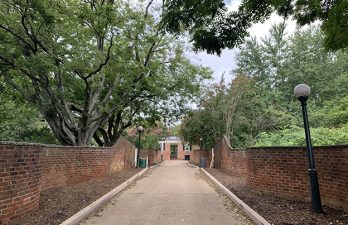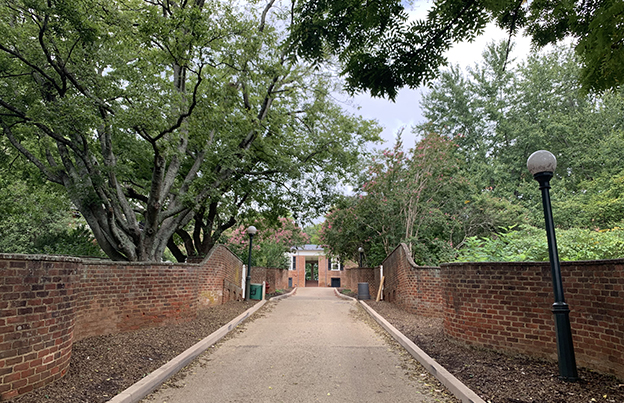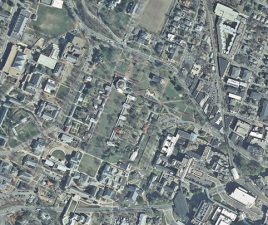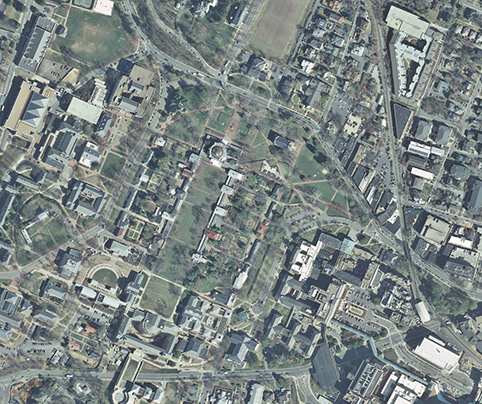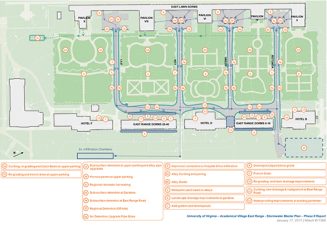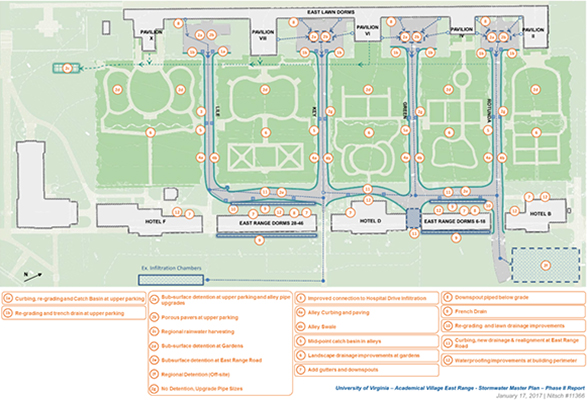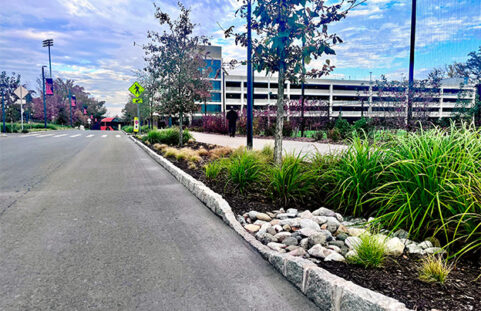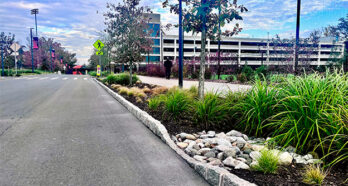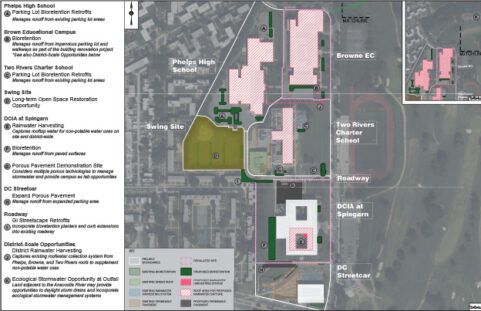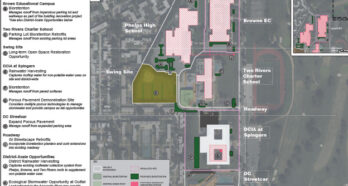The Academical Village East Range at the University of Virginia is a World Heritage Site and National Historic Landmark consisting of historic buildings and landscape, including serpentine walls, stone walls, and service courts that were designed and constructed over 200 years ago by Thomas Jefferson.
Due to severe topographical changes, compacted soil conditions, low infiltrative capacity of the soils, and substandard stormwater management infrastructure, stormwater flows have had significant negative impacts on the historic elements. Stormwater generated by impervious surfaces flowed unimpeded down the steep slopes of the East Range, creating significant erosion and scour on the paved paths and landscaped areas. Stormwater eventually flowed towards the residential buildings at the bottom of the slope where, in some cases, it flowed into the basements and damaged the structures. This stormwater flooding resulted in the need for significant maintenance to the historic elements.
The Nitsch Team performed an initial planning study to help the University understand the existing conditions and provide solutions to reduce stormwater flooding issues. The solutions, which are consistent with the design standards developed by the Secretary of the Interior for properties listed on the National Register of Historic Places, included capturing upstream flows, slowing down the flow of water, and redirecting flows away from the buildings by implementing subsurface infiltration/detention, installing curbing and new catch basins, and regrading the site around downstream buildings. We proposed landscape improvements to help stabilize steep slopes and address drainage issues, along with improving overall aesthetics of the area. The installation of waterproofing and perimeter drainage was also proposed to further protect the historic buildings from flood damage.
After completing the Master Plan in 2017, Nitsch developed implementation designs to help mitigate stormwater flooding and reduce impacts on the historic campus. The proposed improvements were constructed in spring and summer of 2018, in order to be complete prior to the University’s Bicentennial in 2019.
Key Collaborators
Owner: University of Virginia
Archaeologist: Rivanna Archaeological Services
Geotechnical Engineer: Froehling & Robertson
General Contractor: Faulconer Construction Company

